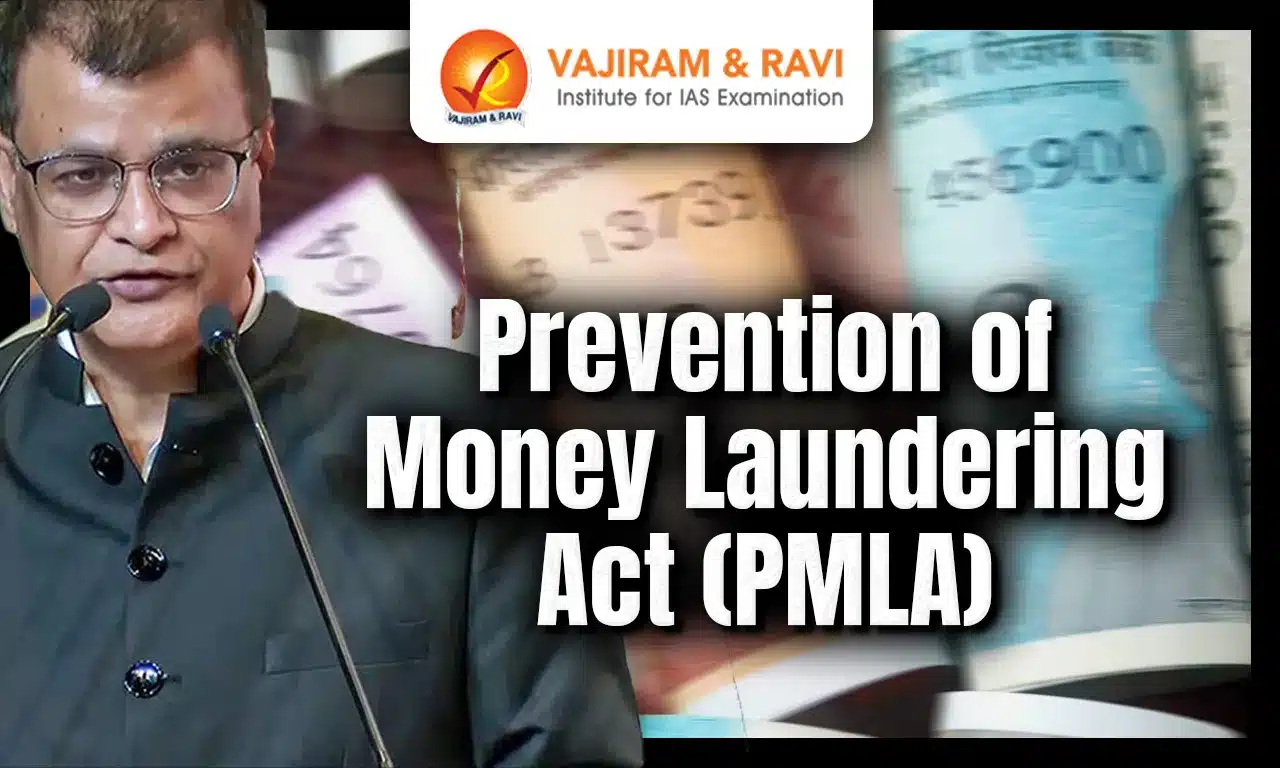Prevention of Money Laundering Act (PMLA) Latest News
The Enforcement Directorate (ED) has significantly intensified actions under the PMLA since 2014, reflecting a heightened institutional response to economic offences in India.
About the Prevention of Money Laundering Act (PMLA), 2002
- The Prevention of Money Laundering Act (PMLA), 2002 was enacted in January 2003 to combat money laundering and confiscate proceeds of crime.
- Section 3 defines money laundering as any attempt to project criminal proceeds as untainted assets.
- The main objectives of the Act are:
- To prevent and control money laundering,
- To attach and confiscate assets derived from crime,
- To address related economic offences in India.
- PMLA has undergone major amendments in 2009 and 2012 to expand its scope and enforcement powers.
- As of 2024-25, the ED has initiated 775 new investigations under the PMLA and filed 333 prosecution complaints, demonstrating increased legal action against money laundering.
Enforcement Directorate (ED) Role
- ED is the chief enforcement agency under PMLA, empowered to investigate, attach property, and file prosecution complaints.
- The Act mandates record maintenance and client identity verification by banks, financial institutions, and intermediaries.
- Key institutions include:
- Adjudicating Authority (for attachment confirmation),
- Appellate Tribunal, and
- Special Courts (designated sessions courts for PMLA trials).
- The Act allows international cooperation through treaties and MoUs with foreign governments.
Focus Areas for 2025
- Foreign Exchange Management Act (FEMA) cases are a key enforcement priority this year.
- Under the Fugitive Economic Offenders Act, 2018, applications were filed against 24 individuals, and 14 have been declared fugitive economic offenders.
- Over ₹900 crore worth of assets have been confiscated so far.
Source: TH
Last updated on November, 2025
→ Check out the latest UPSC Syllabus 2026 here.
→ Join Vajiram & Ravi’s Interview Guidance Programme for expert help to crack your final UPSC stage.
→ UPSC Mains Result 2025 is now out.
→ UPSC Notification 2026 is scheduled to be released on January 14, 2026.
→ UPSC Calendar 2026 is released on 15th May, 2025.
→ The UPSC Vacancy 2025 were released 1129, out of which 979 were for UPSC CSE and remaining 150 are for UPSC IFoS.
→ UPSC Prelims 2026 will be conducted on 24th May, 2026 & UPSC Mains 2026 will be conducted on 21st August 2026.
→ The UPSC Selection Process is of 3 stages-Prelims, Mains and Interview.
→ UPSC Result 2024 is released with latest UPSC Marksheet 2024. Check Now!
→ UPSC Prelims Result 2025 is out now for the CSE held on 25 May 2025.
→ UPSC Toppers List 2024 is released now. Shakti Dubey is UPSC AIR 1 2024 Topper.
→ UPSC Prelims Question Paper 2025 and Unofficial Prelims Answer Key 2025 are available now.
→ UPSC Mains Question Paper 2025 is out for Essay, GS 1, 2, 3 & GS 4.
→ UPSC Mains Indian Language Question Paper 2025 is now out.
→ UPSC Mains Optional Question Paper 2025 is now out.
→ Also check Best IAS Coaching in Delhi
Prevention of Money Laundering Act FAQs
Q1. What is the objective of the Prevention of Money Laundering Act (PMLA)?+
Q2. Which agency enforces PMLA in India?+
Q3. What is a scheduled offence under PMLA?+
Tags: prelims pointers prevention of money laundering act upsc prelims current affairs

















